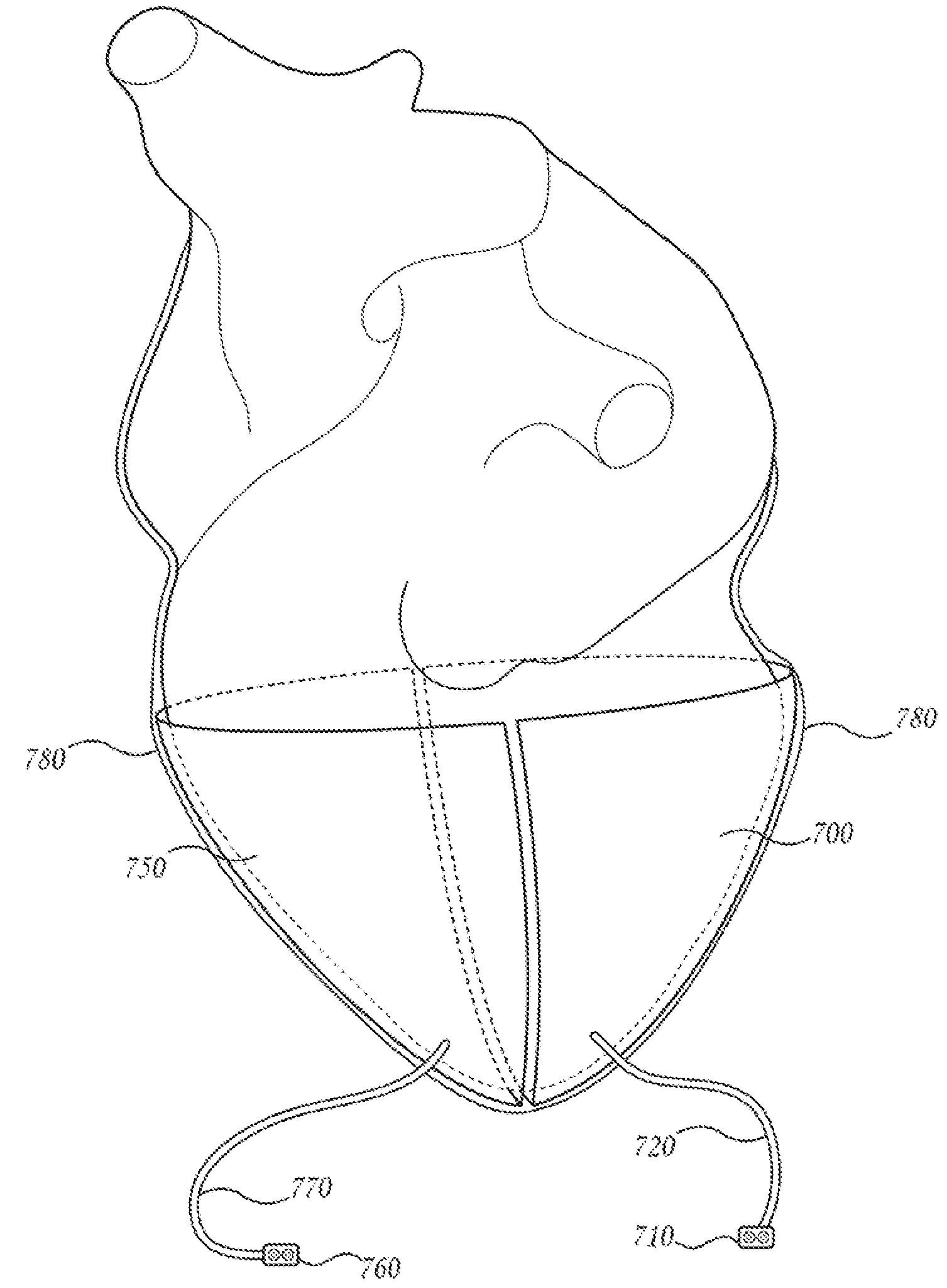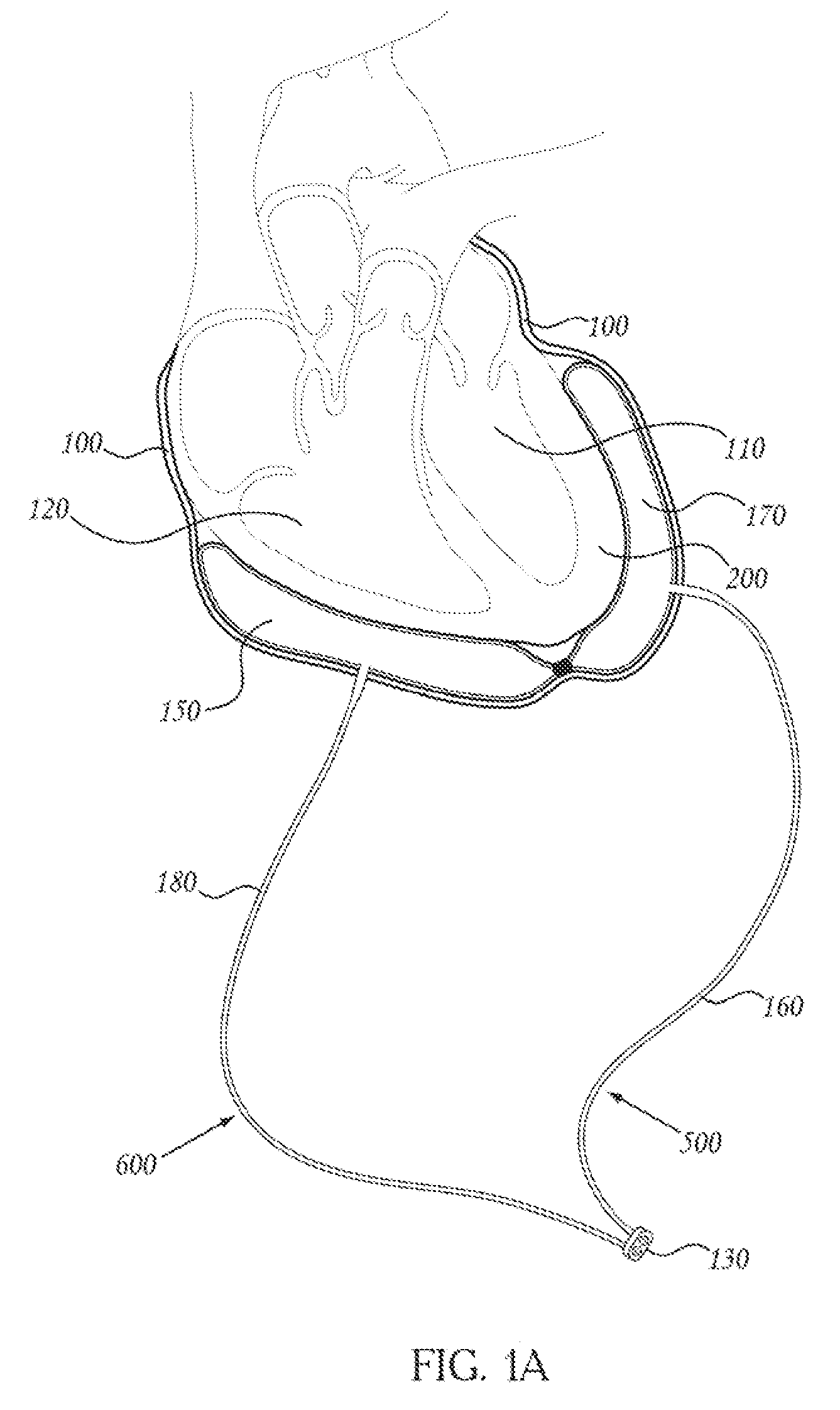Methods of using pericardial inserts
a technology of pericardial inserts and inserts, which is applied in the field of methods and devices for treating heart failure, can solve the problems of end-stage heart failure and death or need for a heart transplant, and is not adjustable (reversible, not removable)
- Summary
- Abstract
- Description
- Claims
- Application Information
AI Technical Summary
Benefits of technology
Problems solved by technology
Method used
Image
Examples
experimental verification
[0220]To verify the physiologic principles above, a series of experiments was performed. A flexible and expandable polyurethane balloon with a wall thickness less than 50 microns was inserted into the pericardium in a porcine animal model. In addition, the balloon had a polyurethane tubing which was thermoset to the curvature of the heart. The tubing was semi-rigid to assist in holding the insert in place as well as prevent the insert from collapsing under its own weight. A pressure measuring catheter was inserted into both the left and right ventricles. The motion of the heart walls was followed with echocardiography. The balloon was inserted over the region of the left ventricle and sequentially filled with 10 cc, 20 cc, 30 cc, 40 cc, 50 cc saline . . . up to 160 cc. When the device contained less than 100 cc of volume at atmospheric pressure, the thickness of the device was less than 1.0 cm. The dimensions of the device were less than 10×10 cm2. The radius of curvature of the dev...
PUM
 Login to View More
Login to View More Abstract
Description
Claims
Application Information
 Login to View More
Login to View More - R&D
- Intellectual Property
- Life Sciences
- Materials
- Tech Scout
- Unparalleled Data Quality
- Higher Quality Content
- 60% Fewer Hallucinations
Browse by: Latest US Patents, China's latest patents, Technical Efficacy Thesaurus, Application Domain, Technology Topic, Popular Technical Reports.
© 2025 PatSnap. All rights reserved.Legal|Privacy policy|Modern Slavery Act Transparency Statement|Sitemap|About US| Contact US: help@patsnap.com



